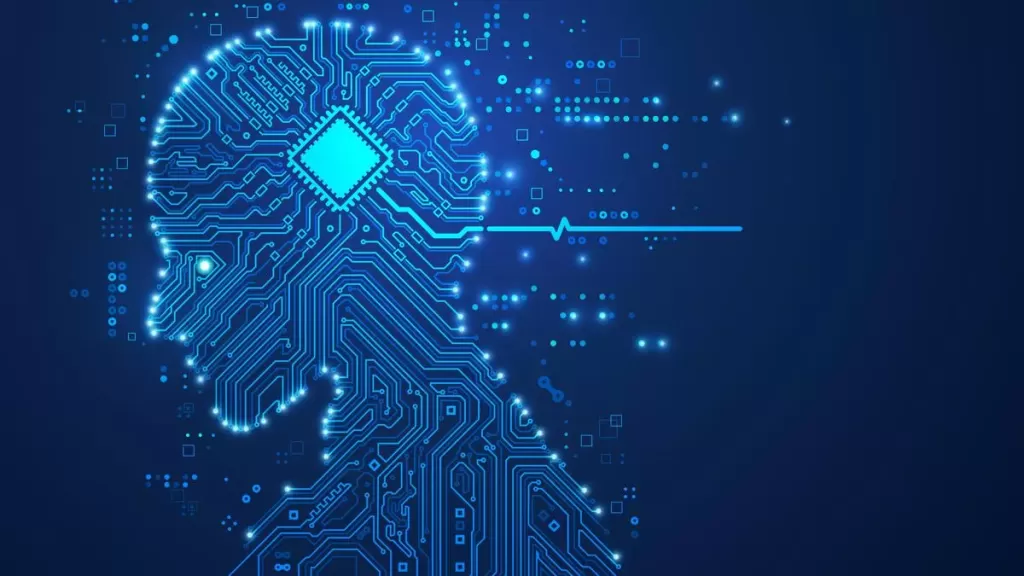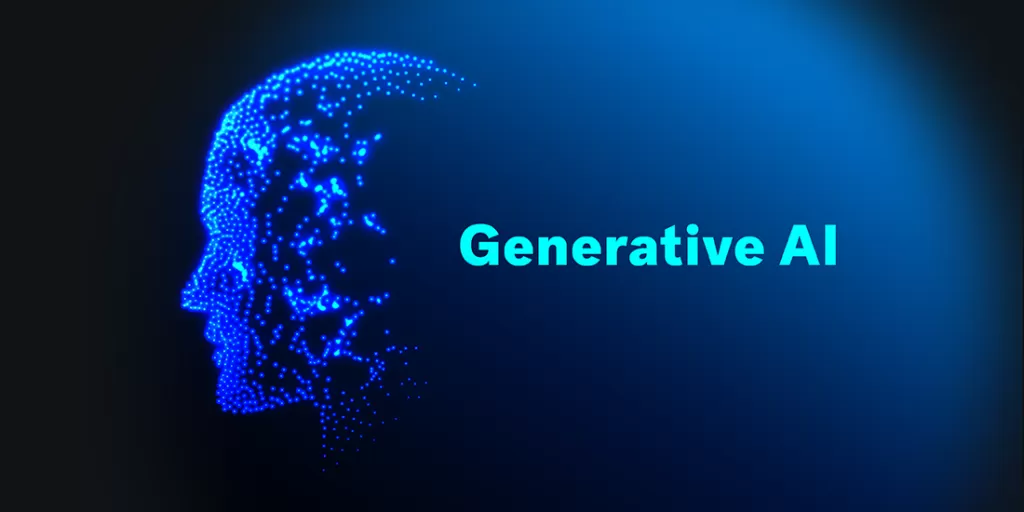Written By:
Scott McAuley
Scott is the IT Director of Texas Management Group, and has been in the IT industry for 25 years.
In today’s fast-evolving digital landscape, cyber threats are becoming more sophisticated. But how can generative AI be used in cybersecurity to counter these risks?
Generative AI, with its ability to analyze vast amounts of data and predict potential threats, is transforming how organizations defend themselves.
From detecting vulnerabilities to automating security responses, this cutting-edge technology offers a proactive approach to staying ahead of hackers. Understanding how to leverage generative AI could be the key to a more secure future.
Let’s uncover 5 smart ways generative AI can keep you one step ahead of cybersecurity threats!
Key Takeaways
- Generative AI quickly analyzes large datasets, enabling faster threat detection and helping organizations stay ahead of cyberattacks.
- AI-driven systems detect new malware strains by learning from existing data, offering more proactive protection against evolving threats.
- Automating security responses with AI reduces human error, improving response times and accuracy during cybersecurity incidents.
- Generative AI helps identify vulnerabilities in code and systems before cybercriminals can exploit them, strengthening overall security.
- AI enhances phishing detection by analyzing language patterns, preventing social engineering attacks more effectively than traditional filters.
Table of Contents
What is Generative AI (GenAI) and How Does it Work?

Generative AI (GenAI) is a branch of artificial intelligence that creates new content using patterns from existing data. It can generate text, images, music, and even code, transforming creativity and efficiency in many industries.
GenAI is powered by machine learning (ML), where algorithms learn from large datasets to recognize patterns. This allows the AI to produce content similar to the data it was trained on.
At its core, GenAI uses neural networks, especially deep learning models. These networks imitate how the human brain works, enabling machines to generate content autonomously.
A well-known example is the Generative Pre-Trained Transformer (GPT), which generates human-like text. GPT models analyze massive amounts of text data, learning to create natural and coherent sentences.
GenAI follows three main steps:
- The model trains on large datasets.
- It learns patterns and structures in the data.
- It generates new, realistic content based on what it learned.
How Can Generative AI be Used in Cybersecurity? 10 Game-Changing Applications
Generative AI is reshaping the cybersecurity landscape with powerful innovations. By automating complex tasks and enhancing detection capabilities, it brings new possibilities to protecting digital infrastructures.
We’ll explore 10 game-changing applications of generative AI in cybersecurity:
| Application | Description |
|---|---|
| Threat Detection | Identifies potential attacks by analyzing large datasets in real time. |
| Malware Detection | Detects new forms of malware by analyzing malware signatures. |
| Automated Incident Response | Automates responses to security breaches, reducing human error. |
| Vulnerability Management | Identifies system vulnerabilities before exploitation. |
| Phishing Detection | Recognizes phishing attempts through pattern and language analysis. |
| Behavioral Analytics | Detects anomalies in user behavior to prevent insider threats. |
| Security Automation | Automates repetitive security tasks, increasing efficiency. |
| Fraud Detection | Analyzes transaction patterns to predict and prevent fraud. |
| Data Loss Prevention | Prevents data breaches by monitoring sensitive data transfers. |
| Password Protection | Strengthens password security by detecting weak or compromised passwords. |
1. Threat Detection
Generative AI can detect threats faster than traditional methods by analyzing vast data sets in real time. This proactive approach helps identify unusual patterns that may signal a potential attack, reducing response times.
2. Malware Detection
AI models can analyze millions of malware signatures, rapidly identifying new forms of malware. By learning from existing data, AI-driven systems can adapt to novel threats before they cause significant damage.
3. Automated Incident Response
Generative AI can handle incident response automatically, minimizing human error. From identifying breaches to initiating mitigation steps, AI improves the speed and accuracy of responses during attacks.
4. Vulnerability Management
By scanning code and systems, generative AI uncovers vulnerabilities before cybercriminals can exploit them. This reduces the risk of undetected flaws that could compromise security.
5. Phishing Detection
AI excels in recognizing phishing attempts by analyzing communication patterns and language used in emails.
Generative AI identifies phishing attacks more accurately than traditional filters, keeping organizations safe from social engineering tactics.
6. Behavioral Analytics
By analyzing user behavior, generative AI identifies anomalies that could signal insider threats or account takeovers. This enables organizations to prevent breaches by monitoring deviations in typical user actions.
7. Security Automation
Generative AI automates repetitive tasks like log analysis and threat intelligence gathering, freeing up security teams for more complex responsibilities. It streamlines processes while maintaining high levels of accuracy.
8. Fraud Detection
In industries like banking, generative AI is used to detect fraud by analyzing transaction patterns. It learns from previous cases to predict and prevent fraudulent activities, enhancing trust in digital systems.
9. Data Loss Prevention
AI can prevent data loss by monitoring sensitive data transfers and flagging potential risks. Generative AI enhances these systems by predicting high-risk behaviors that may lead to data breaches.
10. Password Protection
Generative AI offers advanced password protection by creating highly secure authentication methods. It can also detect weak or compromised passwords, ensuring users maintain stronger security practices.
5 Benefits of Generative AI in Cybersecurity
Generative AI is transforming cybersecurity by providing faster, more accurate, and proactive solutions. As cyber threats grow, AI’s ability to detect, analyze, and respond quickly is vital.
Here are five key benefits of using generative AI in cybersecurity:
| Benefit | Description |
|---|---|
| Speed and Efficiency | AI analyzes data quickly, automating threat detection to save time. |
| Enhanced Accuracy | AI improves over time, reducing false positives and increasing precision. |
| Real-Time Threat Detection | Monitors networks continuously, flagging threats immediately. |
| Scalability | AI adapts to growing data and threats, suitable for any business size. |
| Proactive Threat Mitigation | Predicts vulnerabilities, preventing future cyber-attacks. |
1. Speed and Efficiency
Generative AI analyzes large amounts of data instantly, detecting threats faster than traditional methods. By automating detection, AI frees up security teams to focus on more strategic tasks.
2. Enhanced Accuracy
AI models learn and improve over time, reducing false positives and providing precise threat identification. This allows cybersecurity teams to focus on real threats, improving overall effectiveness.
3. Real-Time Threat Detection
Generative AI monitors network traffic in real-time, identifying unusual activity and flagging potential threats immediately. This rapid detection prevents breaches from escalating and keeps systems secure.
4. Scalability
Generative AI can scale to meet the needs of any organization, regardless of size. As threats grow, AI adapts, handling increasing amounts of data without sacrificing performance.
5. Proactive Threat Mitigation
Generative AI predicts vulnerabilities before they can be exploited. By identifying system weaknesses and simulating attacks, AI helps organizations prevent future cyber threats.
3 Challenges of Using Generative AI in Cybersecurity and How to Overcome Them
Generative AI presents opportunities in cybersecurity but also introduces several challenges.
Here’s a breakdown of these challenges and how to overcome them effectively:
1. Adversarial Attacks
Adversarial attacks occur when cybercriminals trick AI models by feeding them deceptive data, causing incorrect responses.
How to Overcome:
To combat adversarial attacks, organizations should implement adversarial training, where AI models are exposed to manipulated data to improve their resilience.
Regular testing with different scenarios will also help in identifying vulnerabilities and strengthening the AI against such attacks.
2. Overreliance on AI
Relying too much on AI can result in human oversight being reduced, leading to missed threats that AI may fail to detect.
How to Overcome:
Adopt a hybrid model where AI enhances human decision-making rather than replacing it. Ensure regular human oversight, conduct manual reviews, and integrate periodic audits to validate the AI’s performance and accuracy.
3. Ethical Concerns
Using AI in cybersecurity raises concerns about data privacy and ethical handling of sensitive information.
How to Overcome:
Implement strict data governance policies and anonymize sensitive data. Ensure compliance with regulations like GDPR and maintain transparency in how data is processed and stored.
These measures will help address ethical concerns while using AI in cybersecurity.
Conclusion
Generative AI is revolutionizing cybersecurity, offering faster detection, automated responses, and proactive defense against threats.
By harnessing its capabilities, organizations can enhance their security measures and stay ahead of increasingly sophisticated attacks.
Despite some challenges, like adversarial attacks and ethical concerns, adopting a balanced approach with human oversight ensures AI-driven cybersecurity remains effective and secure.
Ready to enhance your cybersecurity? Start leveraging the power of generative AI today!
Ready to Integrate AI Into Your Cybersecurity Strategy?
Visit our blogs to discover smart ways to use generative AI for threat prevention and management. Enhance your security posture with our managed cybersecurity services, designed to keep your business ahead of evolving threats.
Get your free consultation today and unlock the full potential of AI.
FAQ
How Can AI Be Used in Cyber Security?
AI can detect threats, automate responses, and analyze large datasets to identify vulnerabilities.
What is the Role of Gen AI in Cybersecurity?
Gen AI assists in threat prediction, automating security processes, and enhancing defense strategies.
How Do AI and Generative AI Help Hackers With Their Attacks?
Hackers use AI to automate attacks, create malware, and exploit vulnerabilities more efficiently.
What Generative AI Means for Cybersecurity in 2024?
In 2024, generative AI will play a key role in both strengthening defenses and increasing the sophistication of cyberattacks.






